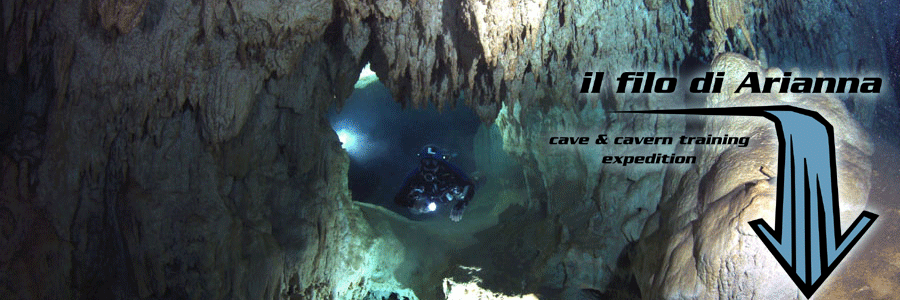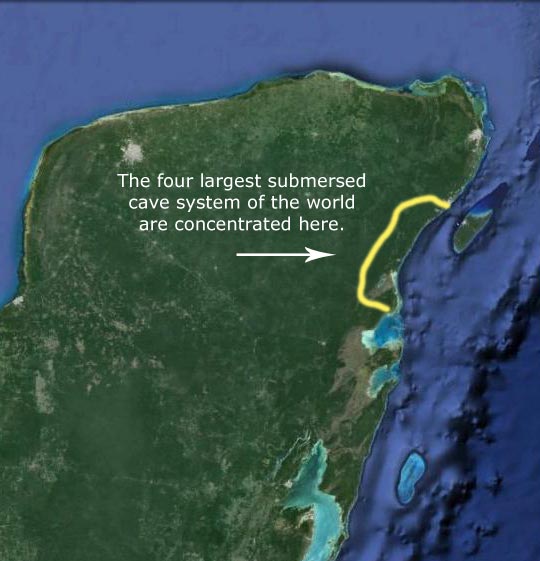

 Il Filo di Arianna is located in
Chemuyil, in the center of Riviera Maya, surrounded by cenotes
and cave systems, making it the world's top place for cave diving.
Il Filo di Arianna is located in
Chemuyil, in the center of Riviera Maya, surrounded by cenotes
and cave systems, making it the world's top place for cave diving.
Chemuyil is in the Mexican state of Quintana Roo, on the east coast of Yucatan Peninsula, 40km south of Playa del Carmen and 18km north from Tulum.
To better understand the origins of the unique scenery, we need to know that this vast area of caverns and cenotes has a very particular geological history: the whole Yucatan peninsula, was a submerged limestone platform (corals and marine sediment) that is now up to 2300 meters thick. This platform initially formed in the Cretaceus period (145 - 65 millions of years ago), when over 1300 m of limestone strata were formed, then continued in the Tertiary period (65 - 1,5 millions of years ago) with an additional 1000 meters of carbonate sediment deposited.
The formation of the caves and caverns, of the systems crossing the Yucatan Peninsula, has taken place in the recent Pleistocene, between 600,000 and 10,000 years ago. This depended upon three independent yet complementary mechanisms:
About 10,000 years or so ago, at the end of the last glacial era, the sea level raised about 100 meters, submerging again the caverns and cave systems. In the deeper passages, we can still find sea water, above which rain water layered. The rain water floats on the surface as it is less dense. And it is this rain water that, as it makes its way to the sea, continues the limestone erosion process.